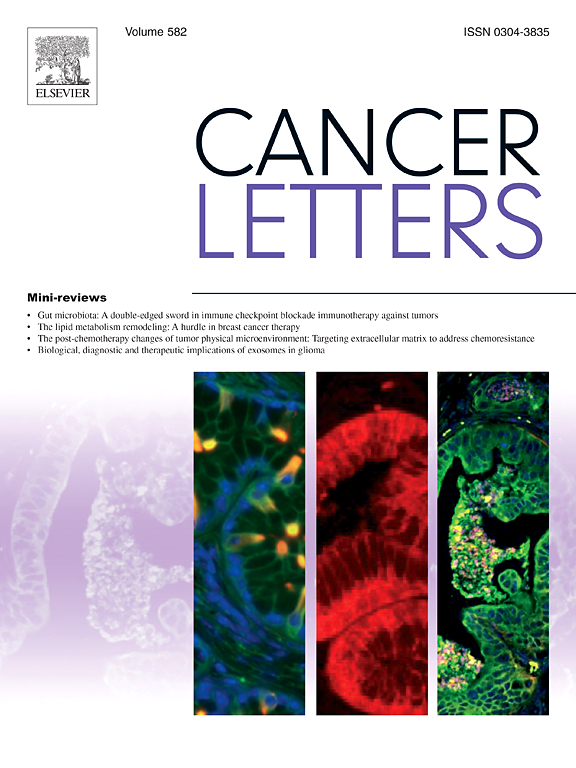血液中吞噬性多倍体巨癌巨噬细胞的表型及临床应用。
IF 10.1
1区 医学
Q1 ONCOLOGY
引用次数: 0
摘要
从历史上看,肿瘤内的多倍体巨癌细胞(pgcc)被认为是多余的炎症废物,没有内在的临床或生物学相关性。然而,最近多项研究表明,pgcc存在于实体瘤肿块中,似乎与肿瘤进展相关,也可以作为癌症相关巨噬细胞样细胞(caml)出现在血液循环中。为了了解caml(即循环中的pgcc)的临床和生物学作用,我们对一系列实体肿瘤患者(n=293;乳腺癌、前列腺癌、食管癌、肺癌、胰腺癌或肾癌)开展了一项为期2年的多机构前瞻性研究,发现caml与疾病进展和扩散显著相关。我们进一步评估了从患者身上分离的caml的生物学特性,确定了异常细胞特征,包括自我更新增殖、促血管生成干细胞生物标志物,具有重叠的髓系、上皮和内皮特征。在这里,我们报告了caml在所有癌症阶段都高度指示疾病进展,并且似乎模仿与转移生态位起始相关的表型(即作为自我更新的多能骨髓细胞穿过血液)。本文章由计算机程序翻译,如有差异,请以英文原文为准。
Phenotyping and clinical utility of phagocytic polyploid giant cancer macrophages in blood
Historically, polyploid giant cancer cells (PGCCs) within tumors have been ignored as superfluous inflammatory refuse with no intrinsic clinical or biological relevance. However recently, multiple studies have described the existence PGCCs in solid tumor masses that appear to correlate with tumor progression, and can also appear in blood circulation as cancer associated macrophage like cells (CAMLs). In an effort to understand the clinical and biological role of CAMLs (i.e. PGCCs in circulation), we initiated a multi-institutional 2 year prospective study of patients in an array of solid tumors (n = 293; breast, prostate, esophageal, lung, pancreas, or renal cell carcinoma), finding that CAMLs significantly correlate with progression and disease spread. We further evaluated the biological traits of CAMLs isolated from patients, identifying abnormal cellular characteristics including self-renewing proliferation, proangiogenic stem cell biomarkers, with overlapping myeloid, epithelial and endothelial characteristics. Here we report that CAMLs are highly indicative of disease progression in all cancer stages and appear to mimic phenotypes associated with metastatic niche initiation (i.e. traversing blood as self-renewing multipotent myeloid cells).
求助全文
通过发布文献求助,成功后即可免费获取论文全文。
去求助
来源期刊

Cancer letters
医学-肿瘤学
CiteScore
17.70
自引率
2.10%
发文量
427
审稿时长
15 days
期刊介绍:
Cancer Letters is a reputable international journal that serves as a platform for significant and original contributions in cancer research. The journal welcomes both full-length articles and Mini Reviews in the wide-ranging field of basic and translational oncology. Furthermore, it frequently presents Special Issues that shed light on current and topical areas in cancer research.
Cancer Letters is highly interested in various fundamental aspects that can cater to a diverse readership. These areas include the molecular genetics and cell biology of cancer, radiation biology, molecular pathology, hormones and cancer, viral oncology, metastasis, and chemoprevention. The journal actively focuses on experimental therapeutics, particularly the advancement of targeted therapies for personalized cancer medicine, such as metronomic chemotherapy.
By publishing groundbreaking research and promoting advancements in cancer treatments, Cancer Letters aims to actively contribute to the fight against cancer and the improvement of patient outcomes.
 求助内容:
求助内容: 应助结果提醒方式:
应助结果提醒方式:


